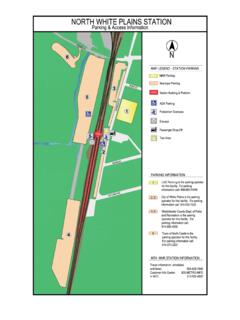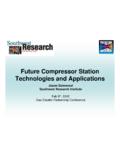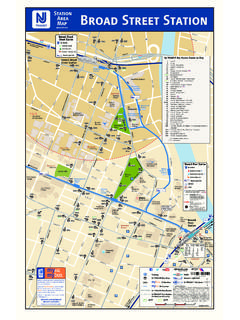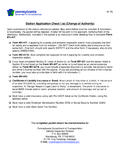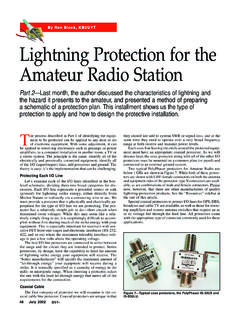Transcription of Tick Management Handbook - ct.gov
1 Tick Management Handbook An integrated guide for homeowners, pest control operators, and public health officials for the prevention of tick-associated disease Revised Edition Prepared by: Kirby C. Stafford III, Vice Director, Chief Entomologist Connecticut Agricultural Experiment station , New Haven Support for printing this revised edition provided by The Connecticut Agricultural Experiment station The Connecticut General Assembly Bulletin No. 1010. Stafford The Connecticut Agricultural Experimentation station Acknowledgements Thanks are given to Dr. Joseph Piesman (CDC, Fort Collins, Colorado), Dr. Peter J. Krause (University of Connecticut Health Center, Farmington, Connecticut), Carol Lemmon (CAES, retired), Bradford Robinson (Connecticut Department of Environmental Protection, Pesticide Management Division), Judith Nelson, Director (retired), and the staff of the Westport Weston Health District (CT), Dr. Terry Schulze (NJ), Dr. Gary Maupin (CDC, retired), and Drs. Louis A. Magnarelli and John F.
2 Anderson (CAES) for reviewing parts or all of the original Handbook . Their comments and suggestions were sincerely appreciated. Thanks are also extended to Vickie Bomba-Lewandoski (CAES) for publication and printing assistance, Heidi Stuber (CAES) for her work in taking some of the tick photographs for the Handbook , and Himanshu Bharadwaj for graphic assistance on the author's tick life cycle diagrams. Dr. Louis A. Magnarelli also provided invaluable editorial and review comments for this revised edition. Sincere thanks are given to the companies, government organizations, foundations, and individuals for permission to use their photographs or illustrations and federal government sources are also gratefully acknowledged. This Handbook would be incomplete without their contributions. Photo Credits Many of the pictures and illustrations in the Handbook are those of the author or staff at The Connecticut Agricultural Experiment station (CAES). All of the pictures are numbered and source credits provided below.
3 Some sources also are otherwise noted in captions. Requests for use of photographs and illustrations belonging to the author and CAES may be directed to the author. Permission to use any other material must be obtained from the original source. Pfizer Central Research (Groton Point Road, Groton, CT): 1, 7, 16, 17, 22, 27, 30, 31, 47, 49, 51, 53-54, 65- 68, 104, 105. Centers for Disease Control and Prevention: 15, 32, 38, 40, 41, 44, 55, 57-58, 60-63, maps of Lyme disease and Rocky Mountain spotted fever cases. United States Department of Agriculture: cover (tick), tick morphology figure (adapted from Strickland et al. 1976), 75. American Lyme Disease Foundation (Somers, NY): 10, 11, 23, 97. Barnstable County Cooperative Extension (Massachusetts): 76. Vector-borne Disease Laboratory, Maine Medical Center Research Institute (Portland, ME): 37. United Industries (Spectrum Brands): 72. Ric Felton (Goshen, CT; ): 14. Jim Occi (Cranford, NJ): 12, 45, 101. Lynne Rhodes (Old Saybrook, CT): 48, 50, 52.
4 Steven A. Levy, DMV (Durham, CT): 64. CAES: Jeffrey S. Ward, 6; Paul Gough, 74; Uma Ramakrishnan, 90-91; Jeffrey Fengler, 98;. Heidi Stuber, 24-26, 28-29, 33-36, 39, 42-43, 46; Anuja Bharadwaj, 112, 113; Kirby Stafford, cover (landscape), 2-5, 8-9, 13, 18-21, 56, 58-59, 69-71, 73, 77-89, 92-96, 99-100, 102-103, 106-111, 114. Disclaimer Mention of a product or company is for informational purposes only and does not constitute an endorsement by The Connecticut Agricultural Experiment station . Published Fall 2007. 2007 The Connecticut Agricultural Experiment station Bulletin No. 1010. Stafford The Connecticut Agricultural Experimentation station Table of Contents Introduction .. 1. Ticks of the Northeastern United States .. 3. Tick biology and behavior .. 4. Tick morphology .. 6. How a tick feeds .. 7. Tick sampling .. 8. Blacklegged tick, Ixodes scapularis .. 9. American dog tick, Dermacentor variabilis .. 13. Lone star tick, Amblyomma americanum .. 15. Other ticks .. 16. Tick-Associated Diseases.
5 20. Lyme disease .. 21. Southern tick-associated rash illness .. 26. Human babesiosis .. 27. Human granulocytic anaplasmosis .. 28. Human monocytic ehrlichiosis .. 29. Rocky Mountain spotted fever .. 30. Tick paralysis .. 32. Tularemia .. 32. Powassan encephalitis .. 33. Tick-borne relapsing fever .. 33. Colorado tick fever .. 33. Bartonella infections .. 33. Lyme disease in companion animals .. 34. Personal Protection .. 35. Tick bite prevention .. 35. Tick removal .. 37. Topically applied insect repellents .. 39. Human Lyme disease vaccine .. 43. Integrated Tick Management .. 44. Landscape Management .. 46. Organic land care practices .. 50. Environmentally friendly lawns and backyard wildlife programs .. 50. Management of host animals .. 52. Prevention of tick-associated disease in companion animals .. 62. Area-wide Chemical Control of Ticks .. 63. Acaricides used for tick control .. 64. Homeowner application of acaricides for tick control .. 65. Commercial application of acaricides.
6 66. An acaricide primer .. 68. Additional sources of information about pesticides .. 69. Biological Control of Ticks .. 70. Selected Bibliography and References .. 71. Bulletin No. 1010. Stafford The Connecticut Agricultural Experimentation station Preface The original 2004 edition was published as part of a community-based program for the prevention of tick-borne illness supported through a cooperative agreement with the Centers for Disease Control and Prevention (CDC). Of the 10,000 copies originally printed, very few remained after wide distribution through Connecticut, New England and elsewhere. The publication was also available online from The Connecticut Agricultural Experiment station 's website ( ). and a link through the CDC. In 2006 alone, 117,000 copies were downloaded from the Experiment station 's website. Nevertheless, there continues to be demand for printed copies. This reprinting of a revised tick Management Handbook in 2007 was made possible with the support of the Connecticut Office of Policy and Management and the Connecticut General Assembly.
7 The information in this publication depends not only on the research conducted by scientists at The Connecticut Agricultural Experiment station , but on that of many other fellow scientists and their published findings as well as disease statistics compiled by the CDC and state health departments. The research and community outreach by The Connecticut Agricultural Experiment station on ticks and tick-associated diseases would not have been possible without the collaboration and support of the Connecticut Department of Public Health and local health departments, particularly the Westport Weston Health District, the Torrington Area Health District, and the Ledge Light Health District. As this publication is intended as a general guide for the public, pest control operators, and public health officials, citations are not directly provided in the text. A selected bibliography of references is listed at the end for those who wish to pursue specific topics further or consult original publications.
8 While the reference list is fairly comprehensive, the scientific literature related to ticks, Lyme disease, and other tick-associated diseases is extensive. There are many excellent papers that could not be listed. Some other sources of information, such as government internet sites, are provided in several specific sections of the Handbook . Surveys have consistently shown that most residents in Lyme disease endemic areas consider the disease an important or very important issue that poses a high risk to members of their family. Children are particularly at risk. An estimated three quarters of all Lyme disease cases are acquired from ticks picked up during activities around the home. The withdrawal of the human Lyme disease vaccine (LYMErix ) in 2002 has essentially brought the control of the disease back to managing tick bites and methods to suppress the local tick population or prevalence of pathogen infection in the ticks. A few precautions and the Management of infected ticks in the residential or recreational landscape can substantially reduce the risk of Lyme disease and other tick-associated illnesses.
9 Prompt recognition of infection and treatment can prevent more serious manifestations of disease. Therefore, education is important in preventing or mitigating disease, but it is only the first step. Landscape and host Management practices combined with the judicious use of an acaricide can provide excellent tick control with minimal risk or impact to the environment or other wildlife. This Handbook provides the homeowner, pesticide applicator, health professional, and others some basic information necessary to manage ticks and prevent Lyme disease. Much still needs to be learned. Implementation of some of the concepts presented in this Handbook can reduce ticks and the risk of Lyme disease. If this publication succeeds in helping families prevent tick-borne illness, then it will have met its goal. Kirby C. Stafford III. Bulletin No. 1010. Stafford The Connecticut Agricultural Experimentation station To these I must add the wood lice [ticks] with which the forests are so pestered that it is impossible to pass through a bush or to sit down, though the place be ever so pleasant, without having a whole swarm of them on your clothes.
10 Pehr Kalm, 18 May 1749. Raccoon [Swedesboro], New Jersey Introduction Ticks have become an increasing problem to people and animals in the United States. Ticks are obligate blood-feeders that require an animal host to survive and reproduce. They feed on a wide variety of mammals, birds, reptiles, and even amphibians. While most ticks feed on specific host animals and are not considered to be of medical or veterinary importance, several ticks have a wide host range and attack people, pets, or livestock. Ticks can be a nuisance; their bites can cause irritation and, in the case of some ticks, paralysis. Severe infestations on animals can cause anemia, weight loss, and even death from the consumption of large quantities of blood. Ticks can also transmit many human and animal disease pathogens, which include viruses, bacteria, rickettsiae, and protozoa. The association between ticks and disease was first 1. demonstrated when Theobald Smith and Fred Kilbourne proved in 1893 that Texas cattle fever (cattle babesiosis) was caused by a protozoan transmitted by an infected tick.










